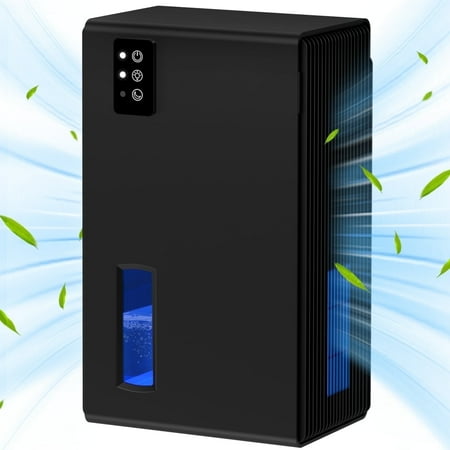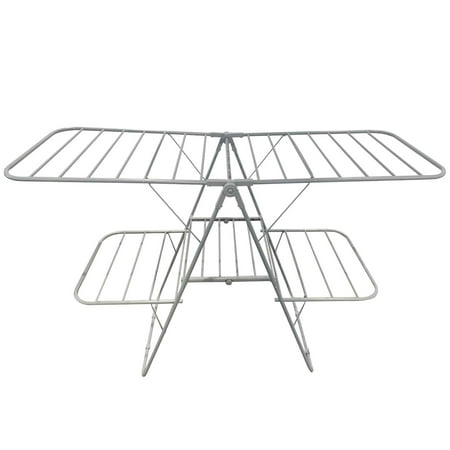If Your Laundry Smells Like Damp, You Could Be ‘Overdosing’ It - Expert Reveals the Easy Fix to Freshen Winter Loads
Laundry overdosing traps moisture and smells


As the resident hound in my house, I am the first person to catch a whiff of mildew or damp smells on fresh laundry and it’s something that bothers me greatly.
That’s why I am so intrigued to learn from experts that the problem is usually ‘overdosing’ laundry.
Here, an expert in bedding reveals what laundry overdosing is, why it happens and the simple fix to avoid the damp smells on clothing it produces, including on towels and linens, so you only have to do a load of laundry once like a pro.
What is Laundry Overdosing?
Simply put, it’s when you use too much detergent or softener, and it clings to the fibers of your laundry items, trapping moisture inside and unpleasant smells with it.
Rachel Fraser, Product Specialist at home retailer Pillow Talk says, ‘Overusing detergent or fabric softener when drying indoors can leave a residue that traps moisture, reduces absorbency, and makes fabrics feel coarse.
‘One of the biggest culprits behind that musty, "wet dog" smell in laundry during winter is excess moisture, either because items aren’t drying quickly enough or because there’s too much detergent residue trapped in the fibres. When detergent builds up, it acts like a sponge, holding onto water and creating the perfect environment for bacteria and mildew to thrive.’
Rachel notes this can be a particularly seasonal winter issue, adding that as temperatures drop and outdoor drying becomes impossible, many households are turning to indoor racks, radiators, and dryers to get laundry dry. 'But how you wash and dry your bed sheets and towels this winter could be the difference between soft, fresh fabrics and stiff, smelly, or worn-out ones,' she says.
Design expertise in your inbox – from inspiring decorating ideas and beautiful celebrity homes to practical gardening advice and shopping round-ups.

A rack design like this can allow air to better circulate your freshly washed clothes, bedding and towels. This also collapses and retracts to make it extra-easy to store in small homes when not in use.

This energy efficient electric heated drying rack will speed up winter launry drying indoors and save you time and effort rewashing loads to clear out damp smells that accumilate from delayed drying.

Avoid laundry overdosing by measuring your detergent and/or softeners properly. This clear dispenser stores detergents neatly whilst the cup comes with measurements to help you avoid wastage and overuse.
It only takes small missteps in winter laundry routines to quickly lead to musty smells, rough sheets and towels, damage to fabrics, and having to wash loads again with even more detergent.
Rachel says, ‘People often assume more detergent means a deeper clean, but it’s actually the opposite. Overdosing can stop fabrics from rinsing properly, especially when you’re drying clothes indoors, where there’s less airflow. That leftover product mixes with moisture and warmth, which is why things can start to smell even after washing.’
In addition to this, it can be harder to properly air-dry laundry, which has lots of benefits. In winter, this is an added issue that can lead to those damp smells. Rachel explains, ‘During colder months, people often wash and dry more frequently but with less ventilation.’
Here, she shares her top tips for keeping clothes, bedding, and towels fresh through the colder months, without relying on outdoor drying.
- Avoid overloading and overdosing: ‘It’s tempting to use extra detergent when clothes smell damp, but this actually makes things worse,’ Rachel says. ‘Too much detergent can build up in fabrics and stop them from drying properly. Use the correct amount and run an extra rinse cycle if needed.
- Ditch the fabric conditioner for towels: ‘Fabric softeners can coat the fibres of your towels, making them less absorbent,’ she says. ‘Instead, add half a cup of white vinegar to the rinse cycle once a month, it helps lift residue and keeps towels fluffy.’ This also applies when washing microfiber cloths, which are a more planet-friendly cleaning item, as they can be washed and reused hundreds of times. Ditching the softener keeps their microfibers absorbent.
- Dry smart, not fast: Rachel advises using low to medium heat in tumble dryers, or air-drying near a dehumidifier or open window to prevent condensation. ‘Over-drying on high heat can make towels stiff and cause shrinkage,’ she adds. ‘And never dry items directly on radiators, as it can trap moisture indoors and create musty smells.’
- Follow care labels and give items space: ‘Different materials need different care,’ Rachel says. ‘Always check the label, wash delicate items like silk pillowcases in laundry bags, and avoid cramming too many bulky items like duvets or toppers into one load.’ We particularly like the multipack of mesh laundry bags from Walmart. They’re highly rated by shoppers, and the various sizes make them very useful across all different types of laundry loads.
- Protect your investment: To extend the life of bedding, Rachel recommends using washable protectors for mattresses and pillows, rotating between two or three sheet sets. ‘This keeps your bedding hygienic, makes laundry less overwhelming, and helps everything last longer,’ she adds.
As winter sets in, these small changes can make a big difference, not just for keeping laundry soft and fresh, but for maintaining a healthier home environment and avoiding moldy and mildew smells.
How to Avoid Overdosing Your Laundry
To help you avoid overdosing your laundry, Rachel explains, ‘Generally, most loads only need about half to three-quarters of the amount listed on the detergent cap. Modern formulations are very concentrated, and using less is usually more effective.
‘When filling the detergent drawer, aim for roughly two tablespoons of liquid detergent or a heaped tablespoon of powder for an average load. If you’re washing towels or bedding, add an extra rinse cycle to make sure all the product is removed.’
This is something I do at home, especially when it’s my daughter’s clothing, as she has sensitive skin and any detergent residue can aggravate her eczema. I’ve also found that a much smaller amount of detergent than recommended still goes a very long way, reducing how often I need to buy detergent, which is welcome as the cost of living continues to rise.
I avoid detergents with optical brightening blue colors, as it is hazardous to the environment. I love the luxurious smell of the EWG-verified Attitude detergent with Geranium, available at Amazon. A small amount goes a long way, and if you air-dry laundry as I do, this fills the air with a subtle geranium smell that is very pleasant.
Bedding expert Rachel adds, ‘If airdrying, dry your laundry near a window or use a dehumidifier to help moisture escape faster, it’ll make a huge difference to that lingering damp ‘wet dog’ smell.’
Indeed, I run a small dehumidifier that I bought from Amazon next to my wet laundry, making sure the air intake vent is facing my laundry rack. This vastly speeds up slow winter drying and also helps banish damp smells from fresh loads.
What to Shop

Enjoy a helping hand with this high-efficiency heated rack to help clothes dry in as little as 180 minutes without wrinkles. This has a sturdy steel frame, can hold around 30 lbs of laundry, and has built-in safety features, including auto shut-off.

This ingenious, discreet airer is sleek, stylish, sturdy, and robust. With a drying capacity of 45 feet and the ability to fold completely flat, it's perfect for drying laundry in small spaces. A neutral colored screen tastefully hides washing from view.

This affordable dehumidifier, loved by Walmart shoppers, covers up to 800 sq. ft, boasts an auto shut-off function, and has a built-in handle for easy portability. Place it near your laundry for speedy drying. Keep windows closed for efficiency.

This rust-resistant drying rack has wings that can be set in three different positions to accommodate longer laundry, and when not in use, folds away compactly. It's four wings include 33 rails to allow for plenty of ventilation and space.

The Environmental Working Group has verified this vegan, plant and mineral-based laundry detergent as it meets the EWG’s strictest standards for health and safety. This Refillable 33.8 fl. oz. aluminum Bottle will clean 40 loads.

Measuring your detergent properly has never been easier. This storage item also comes with its own dosing guide and a cap with clearly-marked measurements to keep you on track.
Finally, Rachel says, ‘For winter washes, it’s also worth occasionally running an empty hot cycle with a cup of white vinegar to clear out any detergent residue in your machine.’
Next, learn why your house feels damp and the things to declutter this winter to avoid mold.

Punteha was editor of Real Homes before joining Homes and Gardens as Head of Solved. She has written and edited wellbeing, lifestyle and consumer pieces for the national press for 17 years, working across print and digital newspapers and magazines. She’s a Sunday Times bestselling ghostwriter, former BBC Good Food columnist and founding editor of independent magazine, lacunavoices.com. Punteha loves keeping her home clean, has tested and reviewed the latest robot vacuums and video doorbells, enjoys cooking, DIY, decluttering and spending weekends personalizing and organizing her newly-built home, tackling everything from plumbing to tiling and weatherproofing, to home fragrancing and cleaning with luxurious smelling homemade solutions.
You must confirm your public display name before commenting
Please logout and then login again, you will then be prompted to enter your display name.